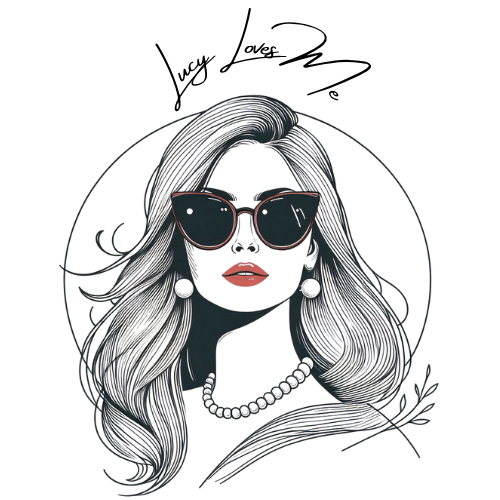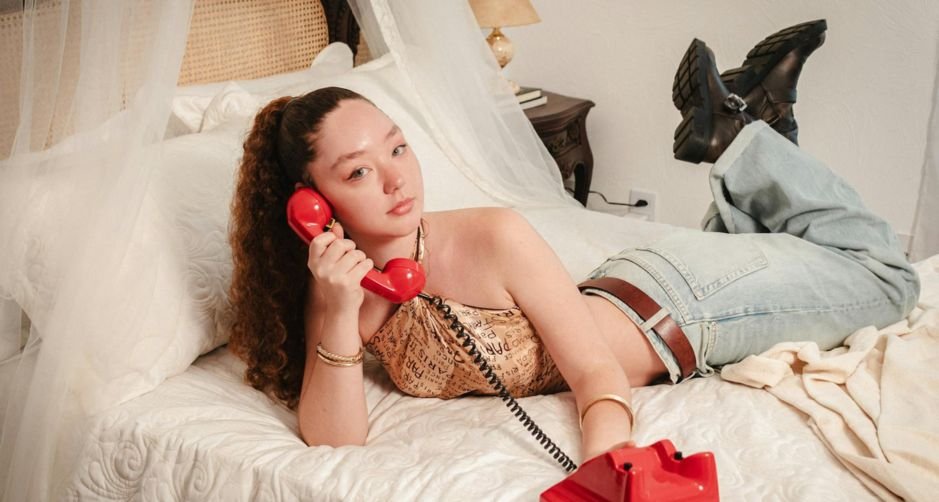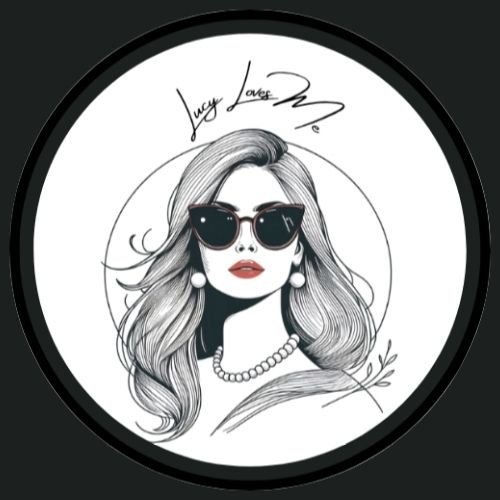So apparently, we’re all dressing like our grandads now. Oversized cardigans, chunky loafers, and those questionable trouser-sock combinations your nan warned you about?
They’re everywhere. Low-rise jeans are crawling back out of the fashion graveyard too, which is either brilliant or deeply concerning depending on who you ask.
Some of us remember wearing these things the first time. We’re not sure we want to go back.
The Grandpacore Revolution: When Your Grandad Becomes Your Style Icon
Gen Z has turned what was once considered “retirement home chic” into runway-ready fashion, with grandpacore taking over wardrobes worldwide. We’re talking oversized knits, relaxed trousers, retro spectacles, and yes, even the dreaded socks-and-sandals combo.
It’s not about raiding actual grandparents’ wardrobes (though plenty of people do exactly that). The eclectic grandpa aesthetic blends vintage comfort with quirky style, redefining fashion through nostalgic, gender-fluid pieces.
Tyler, the Creator’s been rocking loafers and sweater vests for ages, whilst Harry Styles practically built his entire brand around grandpa chic.
TikTok searches for ‘grandpacore’ have already racked up over 19 million views, with creators showing off thrifted cable knit jumpers and sharing tips on nailing that vintage aesthetic.
Y2K is Back, Baby: Low-Rise Jeans and Butterfly Clips Make Their Return
Remember when you swore you’d never wear low-rise jeans again? Well, the fashion gods had other plans.
This year, brands like Alaïa and Gucci brought back low-rise jeans as one of the top denim trends, alongside velour tracksuits that Paris Hilton and Britney made iconic two decades ago.
High-fashion runways aren’t the only place you’ll spot the Y2K revival. Fashion analysis suggests that Y2K was a visual manifestation of the fun, technologically advanced and optimistic 2000s that mid-1990s societies were excitedly envisioning.
In uncertain times, maybe we all need a bit of that playful optimism, even if it comes wrapped in questionable fashion choices.
But here’s where it gets divisive. Whilst some fashionistas are living their best early-2000s fantasy, others are cringing at the thought of belly chains and visible G-strings making a comeback.
Pinterest saw a 145% rise in searches for ‘2000s outfits’ year-on-year, proving that nostalgia sells, even when the trends themselves were… let’s say, questionable.
The 90s Aren’t Done Yet: Grunge, Slip Dresses, and Platform Everything
The 2000s might be getting all the attention, but the 90s refuse to budge. Oversized dad jeans, colour-blocked windbreakers, slip dresses layered over band tees – 90s fashion trends keep dominating wardrobes.
Designers have taken these looks and given them a fresh spin that works for right now.
Fashion used to move in 20-year cycles, but that’s changing fast. What used to take two decades to come back around now happens in half that time.
Slip dresses worn over plain tees, combat boots with floral dresses, cargo trousers paired with fitted vests – it’s all fair game.
The grunge aesthetic has been particularly resilient. Sales of 90s-inspired fashion saw a 126% increase in search interest from November 2024 to March 2025, with slip dresses and high-waisted jeans leading the charge.
Brands are catching on too, launching “90s nostalgia” collections that play on our collective memory of simpler times.
Why Are We So Obsessed with Nostalgia Right Now?
There’s actual psychology behind our collective yearning for the past. Research shows that nostalgia can provide comfort, reduce stress, and create a sense of belonging, especially during uncertain times.
When the world feels chaotic, there’s something deeply reassuring about clothes that remind us of happier, simpler days.
Behavioural psychologist Carolyn Mair explains that when we feel a lack of control, we resort to something we can control, like our memories of the past.
Fashion becomes more than just clothes. It’s a coping mechanism, a way to feel connected to positive experiences and emotions we associate with different eras.
But not everyone’s buying into the nostalgia narrative. Some fashion critics argue that constantly looking backwards prevents the industry from moving forward.
Are we running out of ideas, or are we just really good at recycling them?
Nostalgia in fashion offers a form of self-expression, helping unify our sense of identity over time and connecting us socially through shared memories.
It’s why a velour tracksuit can spark an entire conversation about childhood memories, or why seeing someone in platform trainers instantly transports you back to 1999.
The Great Debate: Should These Trends Stay Dead?
Let’s be honest – not all trends deserve a second chance. Some things were mistakes the first time around and bringing them back won’t change that.
Low-rise jeans with visible thongs? Hard pass from many people. Dresses over jeans? Still controversial. Tiny sunglasses that protect approximately 2% of your face? Functionally useless.
Yet here’s what makes vintage fashion comebacks interesting: they’re not carbon copies. Fashion stylist Tabitha Sanchez suggests it’s about picking and choosing what works for you and incorporating it into your personal style rather than copying looks wholesale from twenty years ago.
Fashion moves in 20-year cycles when tastemakers get nostalgic for their childhoods, but the nostalgia loop has sped up significantly.
TikTok has created an environment where every single thing can be considered cool simultaneously. You can find a corner of the app where grandpacore reigns supreme, another where Y2K is everything, and yet another celebrating minimal 90s aesthetics.
The key difference between now and then? We’ve got options. The internet’s given us access to decades of fashion history at our fingertips, which means we can cherry-pick the best bits whilst leaving the questionable choices firmly in the past (looking at you, velvet chokers).
The Sustainability Angle: Vintage Fashion’s Secret Weapon
Here’s something that wasn’t talked about much during the original runs of these trends: sustainability.
The average Gen Z wardrobe contains about 15% thrifted and reworked pieces, with 66% of young shoppers willing to pay more for environmentally friendly products.
The vintage fashion comeback isn’t just about nostalgia. It’s about rejecting fast fashion’s wasteful practices.
Over 60% of Gen Z shoppers look for secondhand options before buying new items, and the global secondhand market is expected to reach $350 billion by 2027.
Thrift stores, charity shops, and online platforms like Vinted and Depop have made it easier than ever to find authentic vintage pieces.
You’re not just buying into a trend – you’re participating in a more conscious approach to fashion consumption. Plus, wearing something genuinely vintage has way more cachet than a high-street knock-off.
The Verdict: Old is New, But Make it Personal
So should 90s and 00s trends stay in the past? The answer isn’t straightforward. What works depends entirely on personal style, body type, and how you interpret these vintage looks for modern life.
Grandpacore proves that fashion doesn’t have to be fast to feel fresh. In a world dominated by speed and technology, comfort and nostalgia offer a quiet counterpoint.
The same logic applies to other vintage revivals – they work when they’re genuine expressions of personal style, not desperate attempts to recreate something that already had its moment.
The beauty of fashion in 2025 is that you genuinely can wear whatever you want. Want to rock a cable knit cardigan your actual grandfather owned? Do it.
Feel like pairing a slip dress with chunky trainers? Go ahead. Miss low-rise jeans? Well, they’re back, though whether they should be is still up for debate.
Fashion expert Josh Neuman explains that the Y2K aesthetic endures because it was playful, carefree, and unapologetic about flaunting emerging styles.
Fashion should be fun. If revisiting the past brings you joy and helps you express yourself, who’s to say those trends belong in the archives?
The key is adaptation. Take inspiration from vintage looks but make them work for your life now. Mix decades, break rules, and most importantly, wear what makes you feel good. Because ultimately, that’s what fashion’s always been about.
What’s Your Take?
We want to hear from you. Are you team grandpacore, living your best vintage life? Or do you think some trends should remain firmly in the past where they belong?
What childhood fashion moments do you remember, and would you actually wear them again?
The fashion conversation is always evolving, and your voice matters. Whether you’re raiding charity shops for authentic vintage finds or side-eyeing the return of butterfly clips, there’s room for everyone in this debate.
After all, fashion’s most exciting when it’s personal, not prescriptive. So grab that oversized cardigan, those platform trainers, or whatever makes you feel like your most authentic self.
The past is back, but the future of how we wear it? That’s entirely up to you.
What vintage trends are you embracing in 2025? Share your thoughts and favourite throwback styles with us on social media.


